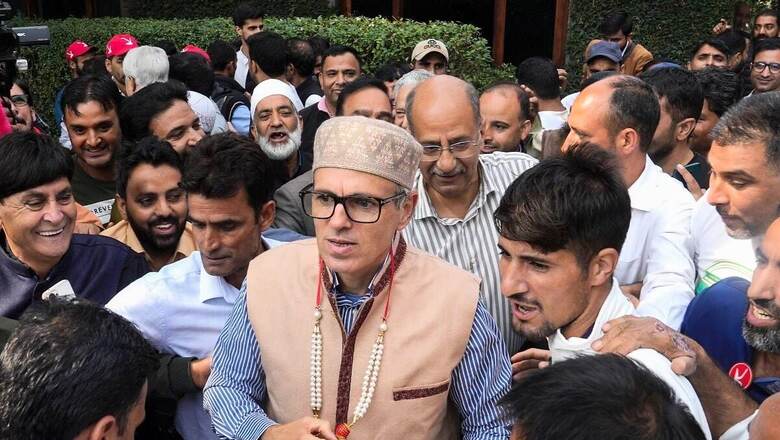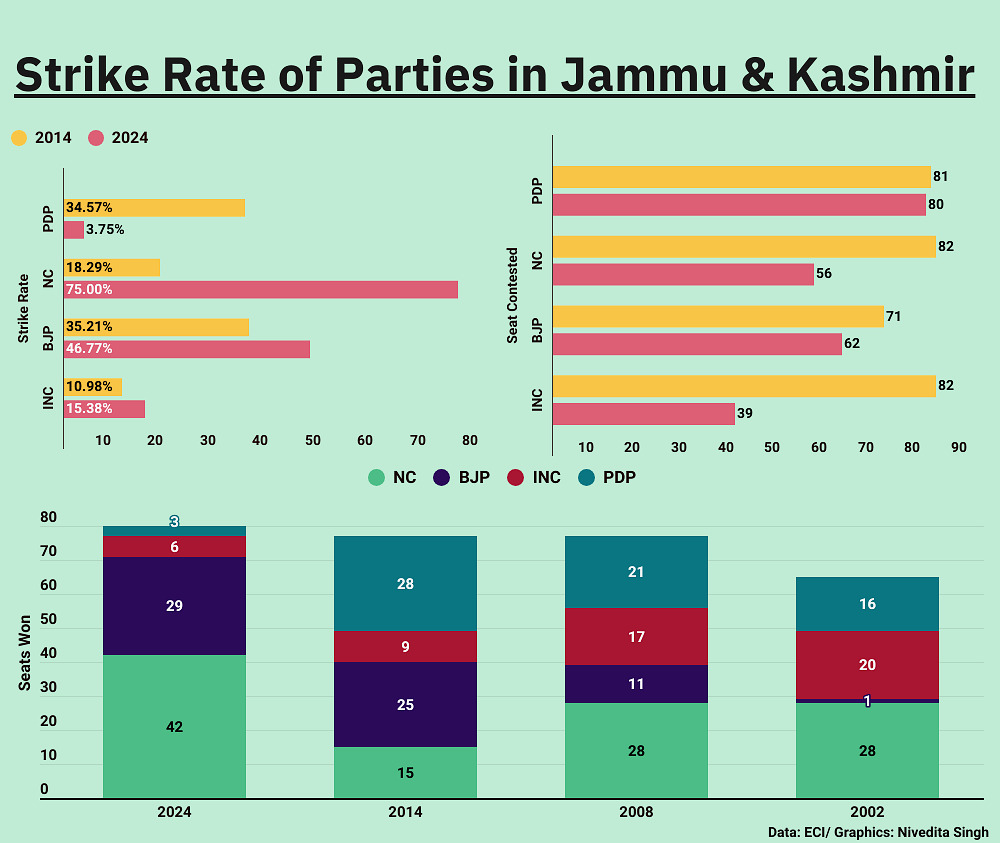
views
The National Conference (NC) has emerged as the largest party in the Jammu and Kashmir assembly polls, winning 42 of 90 seats on Tuesday. The analysis of official data reveals that every three of four candidates fielded by the party made it to the House, with a strike rate of 75 per cent.
There were 56 candidates from the party who attempted their luck in the election and 42 made it to the House, as per the data from the Election Commission of India. This time, the party contested in alliance with the Congress. Of the 56 candidates from the National Conference, 39 fought in the Kashmir region, while 17 were in the fray from Jammu. The party won 34 seats in Kashmir and seven in Jammu. While its collective strike rate was 75 per cent, in Kashmir, it was 87 per cent, while in Jammu, it was 41 per cent.
National Conference chief Farooq Abdullah on Tuesday announced that his son and party leader Omar Abdullah will be Jammu and Kashmir’s chief minister. This is the second time Omar will take charge of the erstwhile state. He had earlier served as the chief minister between 2009 and 2015.
The NC’s strike rate is the best among the four major parties in the region — two national and two regional. Peoples Democratic Party (PDP), which formed the last government in the erstwhile state, contested on 80 seats and bagged just three, a strike rate of around four per cent. All the three seats were from Kashmir region.
The PDP formed the government after the 2014 elections in alliance with the Bharatiya Janata Party. The BJP contested on 62 seats and won 29 — a strike rate of around 47 per cent. The Congress was elected on six seats out of the 39 it contested — a strike rate of 15 per cent.
The victory on 42 seats is the best performance of the NC in at least the last four elections. The party won 57 seats in the 1996 polls. For BJP, it was the best-ever performance with 29 seats.

In a post on social media platform X, BJP leader Amit Malviya said the BJP contested on 43 seats in Jammu and won 29 (67.44 per cent strike rate).
“BJP won 10/11 ACs in the Dogra heartland of Jammu district. 12/13 ACs in Kathua, Sambha and Udhampur districts. The BJP has also won big in the Chenab Valley and Pir Panjal Range. BJP’s Devender Singh Rana won Nagrota with the biggest margin of 30,472 votes,” he said.
He further said the Congress contested 29 seats and won just one, “a poor 3.44 per cent strike rate”. Malviya called the NC performance “impressive” as it won 87 per cent of the seats it contested on. In Kashmir, Congress contested on 10 seats and won five.
Union minister and BJP leader G Kishan Reddy also praised his party, saying the increased vote share for BJP in Kashmir and 98 per cent strike rate in Jammu region “reflects the impact of BJP’s commitment towards welfare of the region”.
In 2014, when the erstwhile state went for polls, it had four seats from Ladakh as well. In 2019, the state was divided into two Union Territories. Before elections, the UT of J&K also witnessed delimitation.
To simplify the calculation, we removed the four assembly seats from Ladakh from the data of the 2014 elections. Congress fought on 82 seats in 2014 and won on nine — a strike rate of around 15 per cent, almost similar to 2024. The PDP contested on 81 and won 28 (35 per cent) while for BJP the strike rate was 35 per cent — 25 candidates won out of 71 in the fray. The National Conference contested on 82 seats and won on 15, a strike rate of 18 per cent.



















Comments
0 comment